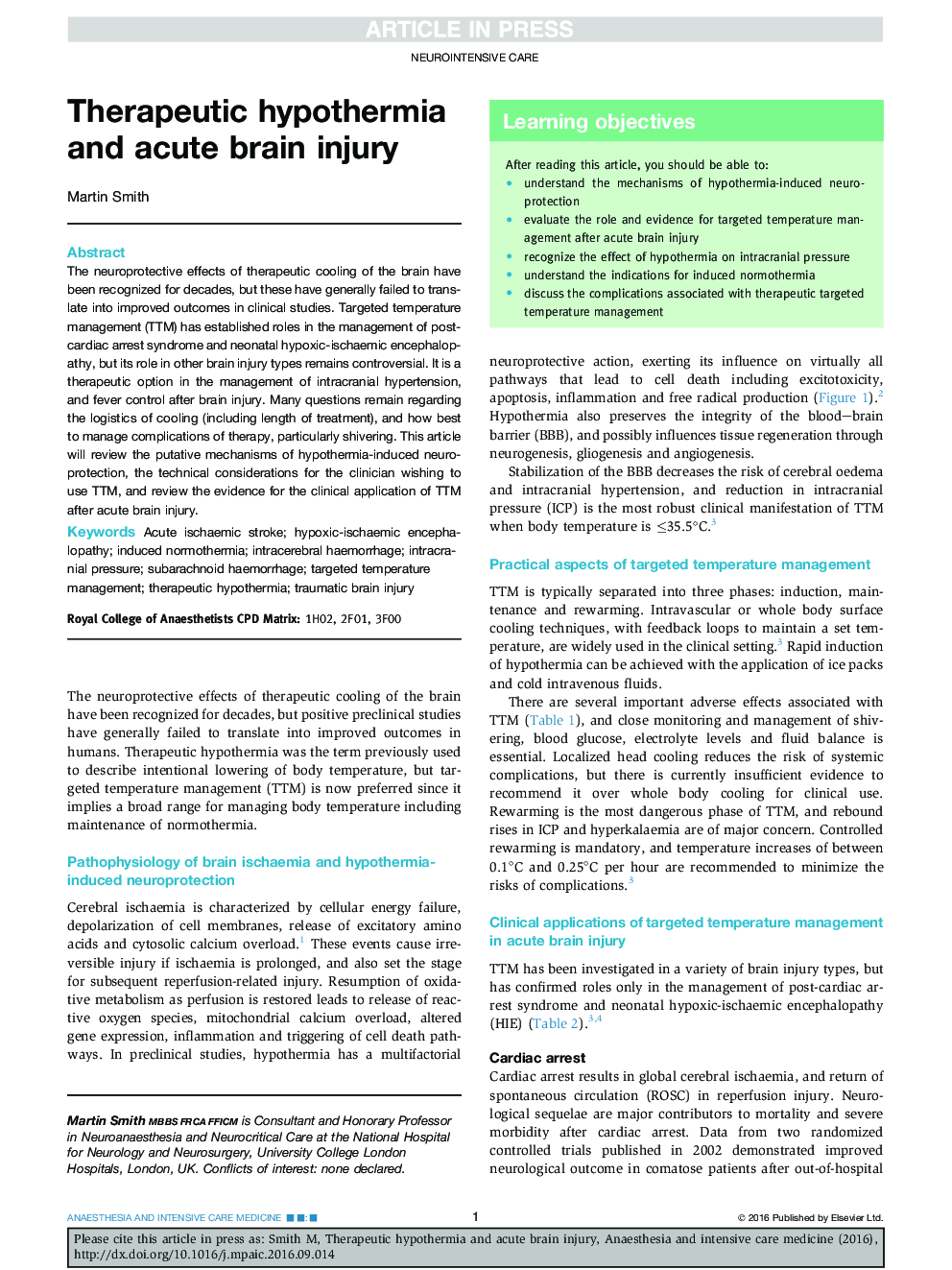| Article ID | Journal | Published Year | Pages | File Type |
|---|---|---|---|---|
| 5580255 | Anaesthesia & Intensive Care Medicine | 2016 | 5 Pages |
Abstract
The neuroprotective effects of therapeutic cooling of the brain have been recognized for decades, but these have generally failed to translate into improved outcomes in clinical studies. Targeted temperature management (TTM) has established roles in the management of post-cardiac arrest syndrome and neonatal hypoxic-ischaemic encephalopathy, but its role in other brain injury types remains controversial. It is a therapeutic option in the management of intracranial hypertension, and fever control after brain injury. Many questions remain regarding the logistics of cooling (including length of treatment), and how best to manage complications of therapy, particularly shivering. This article will review the putative mechanisms of hypothermia-induced neuroprotection, the technical considerations for the clinician wishing to use TTM, and review the evidence for the clinical application of TTM after acute brain injury.
Keywords
Related Topics
Health Sciences
Medicine and Dentistry
Anesthesiology and Pain Medicine
Authors
Martin Smith,
